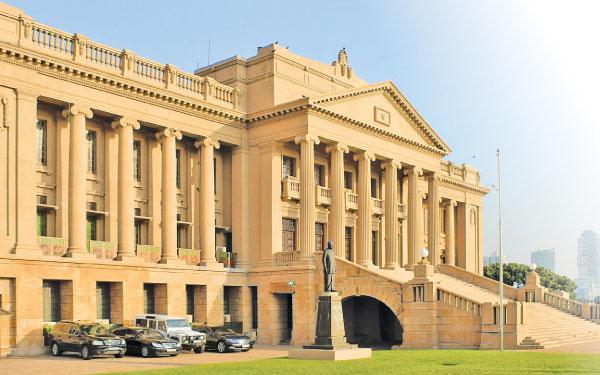
Colombo, the commercial capital of Sri Lanka, is renowned across Asia for its special landmarks of historical, technological and cultural value. Here are some places you may like to visit on your next trip to the city.
Old Parliament Building
This building was the parliamentary complex of Sri Lanka until 1983, when the current Parliament complex was built in Sri Jayewardenepura Kotte. Currently, the building houses the Presidential Secretariat of Sri Lanka. With an uninterrupted view of the Colombo seashore, the Old Parliament building was constructed during the British colonial era. After its opening in 1930, it served for 53 years as the meeting-place of the Ceylon (as Sri Lanka was called then) parliament.
Galle Face Green and Hotel
The Galle Face Green is just a few steps away from the Old Parliament Building. Stretching for about 500 metres along the Colombo coastline, the Green was popular for many sports such as horse riding, football and cricket back in the day. This is a popular destination for children, vendors, teenagers, kite flyers and all those indulging in their favourite pastimes next to the Indian Ocean under the Colombo sky. Foreigners and locals alike love to take a leisurely stroll along the beach, an isso wade or an ice cream cone in hand.
The Galle Face Hotel, dating from 1864, started as a Dutch villa called Galle Face House overlooking the Green.
It had been a meeting place for gentlemen of the colonial era, until four British entrepreneurs decided to use it to start a business, unaware that, by the late 19th century, it would be known as the most magnificent hotel in Asia.
Lotus Tower
The Lotus Tower is the tallest tower in Sri Lanka and South Asia, the 11th tallest in Asia, and the 19th tallest in the world. The Nelum Kuluna, as it is called in Sinhalese, is in the heart of Colombo. A special feature of this tower is its alternating colours; pink and yellow.
Recent technology has allowed Sri Lankan specialists and architects to achieve this feature.
The Lotus Tower takes its name from its shape of a lotus blossom, which symbolises purity within Sri Lankan culture. It features a revolving fine-dining restaurant, several conference halls, an auditorium and an observation gallery.
Altair
The Altair was opened in October 2021.
One of the tallest buildings in Colombo, its breathtaking structure and unique “leaning tower” concept adds another level of distinctiveness to the city’s skyline.
Over 400 apartments have been built in the Altair, each one of them offering multiple marvellous views of Colombo.
The building’s 68-story vertical tower and 63-story sloping tower truly adds to its individuality.
Red Mosque, Pettah
The Jami-Ul-Alfar Mosque, more commonly known as the Red Mosque, is one of the oldest in Colombo and is a popular tourist attraction.
Its architect was H. L. Saibo Lebbe and the mosque’s hybrid-style architecture, combines Indian, Gothic and Neo-revival styles.
Construction of the Red Mosque commenced in 1908, and was completed a year later in 1909.
The mosque can currently accommodate 10,000 devotees, due to the building’s massive extension undertaken in 1975.
These designs along with the colours gives this mosque a unique flavour among the other commercial buildings on 2nd Cross Street, Pettah.
It has been described by many critics as ‘an architectural wonder of the world’ that stuns viewers with its unusual colour patterns and unconventional, yet amazing, design.
St Anthony’s Church
St. Anthony’s Church, in Kochchikade, was the focus of attention back in 2019 when it was bombed as part of the Easter Sunday attack on the April 21.
The church itself dates back to the 1600s when Catholicism was banned from Ceylon. Fr. Antonio disguised himself as a merchant and found refuge in Mutwal (now Modera, Colombo 15).
He built a chapel dedicated to St. Anthony of Padua.
The chapel of St. Anthony was enlarged in 1806, and a new church was built in 1834.
The church underwent an enlargement project in the 1930s. Fr. Antonio is buried in the church.
Captain Gardens Kovil
The Captain Gardens Kovil, on Kovil Street, Colombo, is one of the oldest kovils in the city. Locals believe that it was constructed during the second half of the 1770s during the Dutch rule.
The complex comprises two separate kovils, the Sri Balaselvanayagam Devasthanam and the Sri Kailasanathar Swamy Devasthanam. The first kovil is dedicated to God Ganapathi while the second one is dedicated to Lord Shiva.
The Captain’s Garden Kovil is known in Tamil, as the Theevu Kovil meaning the “island temple”. The land on which the Kovils are, was previously an island surrounded by the waters of the Beira Lake, and the devotees came in boats to worship at the kovils.
Gangarama Temple
The Gangarama Temple is one of the most popular and most important Buddhist temples in Colombo. Incumbents of this temple have been instrumental in establishing several foreign Buddhist monasteries, the temple was built in the late 1800s and had been the home for well-educated scholars such as Ratmalana Sri Dharmarama Thera, Weligama Sri Sumangala Thera and Welivitiye Dhammaratna Thera.
Seemamalaka
The Seemamalaka, a subsection of the Gangarama temple includes several imposing buildings and is situated close to the placid waters of the Beira Lake. A creation of one of the most influential Asian architects of the 20th century, Geoffrey Bawa. The Seemamalaka embodies the styles of ancient monasteries in Anuradhapura, as well as Bawa’s signature modern twirls.
Dinara Thuljan Hettiarachchi
Grade 8
Ananda College
Colombo
 |
|
Galle Face Green and Hotel
 |
|
Red Mosque, Pettah
 |
|
St Anthony’s Church
 |
|
Captain Gardens Kovil
 |
|
Seemamalaka
 |
|
Gangarama Temple
 |
|
Gangarama Temple
 |
